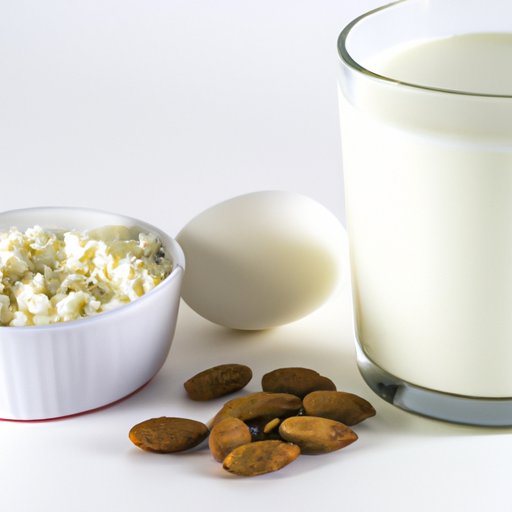
Introduction
Calcium deposits are a common medical condition that affects many people, especially those over the age of 30. These deposits can occur in various parts of the body, such as the kidneys, joints, and arteries, and can cause pain, inflammation, and stiffness. In this article, we’ll explore how to get rid of calcium deposits and take a look at natural remedies, diet, medical treatments, and prevention strategies for this condition.
Understanding Calcium Deposits: A Guide to Diagnosis and Treatment
Calcium deposits occur when calcium builds up in body tissues, forming hard, stone-like masses. These deposits can be caused by a variety of factors, such as calcium metabolism disorders, hormonal imbalances, and poor diet. There are different types of calcium deposits, including in the kidneys, joints, heart, and skin, and each type can cause different symptoms and complications.
To diagnose calcium deposits, your doctor may perform a physical exam, blood tests, and imaging tests such as X-rays, CT scans, and ultrasounds. Treatment for calcium deposits may vary depending on the severity of the condition and the location of the deposits.
Medical treatments for calcium deposits may include pain relievers, anti-inflammatory drugs, and medications that break down the calcium deposits. In some cases, medical procedures such as shockwave therapy or surgery may be necessary to remove the deposits.
Natural Remedies for Calcium Deposits
In addition to medical treatments, there are also natural remedies that can help get rid of calcium deposits. These remedies often have fewer side effects and offer a more holistic approach to healing the body.
Apple cider vinegar is one of the most popular natural remedies for calcium deposits. It contains acetic acid, which helps dissolve calcium deposits in the body. Mix apple cider vinegar with warm water and honey and drink this solution once or twice a day to help break down calcium deposits.
Epsom salt is another effective natural remedy for calcium deposits. It contains magnesium, which helps reduce inflammation and pain. Mix Epsom salt with warm water and soak the affected area for at least 20 minutes daily. Repeat this remedy several times a week for best results.
Castor oil is another great natural remedy for calcium deposits. It contains ricinoleic acid, which helps reduce inflammation and is also an analgesic. Apply castor oil to the affected area and gently massage it into the skin. Repeat this remedy twice a day for best results.
It’s important to note that natural remedies may not work for everyone, and they may take longer to see results than medical treatments. Always consult with your doctor before trying any new remedies or supplements.
Diet and Calcium Deposits
Diet plays a significant role in the formation of calcium deposits. Consuming a diet that is rich in calcium can lead to deposits in various parts of the body. However, this does not mean that you should avoid calcium-rich foods altogether.
The key is to maintain a balanced diet that includes calcium-rich foods, such as milk, cheese, and dark leafy greens, but also includes foods that counteract calcium absorption, such as magnesium-rich foods like almonds, avocados, and bananas. Avoiding excess salt and carbonated drinks can also help prevent the formation of calcium deposits.
Managing and Preventing Calcium Deposits
Preventing calcium deposits involves maintaining a healthy lifestyle. This includes exercising regularly, maintaining a healthy weight, and staying hydrated by drinking plenty of water. Exercise can help maintain healthy bones and prevent the buildup of calcium deposits. Stretching exercises are especially important for those who suffer from joint calcium deposits.
Avoiding smoking and alcohol consumption can also help prevent the formation of calcium deposits. Taking regular breaks during long periods of work or activity can also help avoid the formation of calcium deposits in the joint areas.
Medical Treatments for Calcium Deposits
If natural remedies and lifestyle changes do not provide sufficient relief from calcium deposits, medical treatments may be necessary. Your doctor may recommend medication that dissolves calcium deposits or reduces inflammation and pain. In more severe cases, surgical removal may be necessary. Always consult with a medical professional before undergoing any medical treatments.
Conclusion
Calcium deposits can be a painful and debilitating condition, but there are many ways to treat and prevent them. Natural remedies, diet, exercise, and medical treatments can all help get rid of calcium deposits. Remember that natural remedies may not work for everyone, and medical treatments may be necessary in some cases. Always consult with your doctor before trying any new treatment or remedy for calcium deposits.
With the right treatment and prevention strategies, you can get back to living a healthy, active life free from the pain and inflammation caused by calcium deposits.




